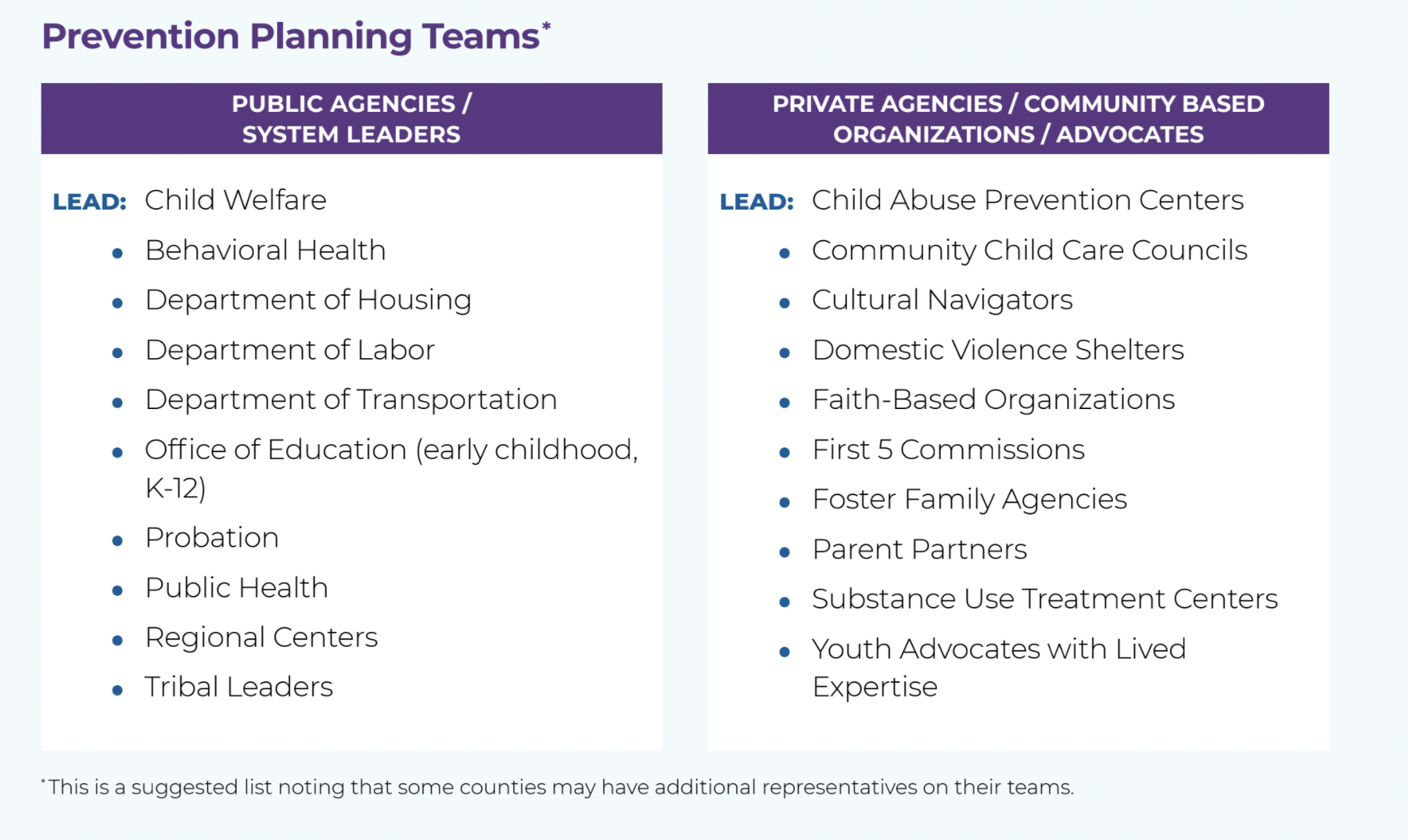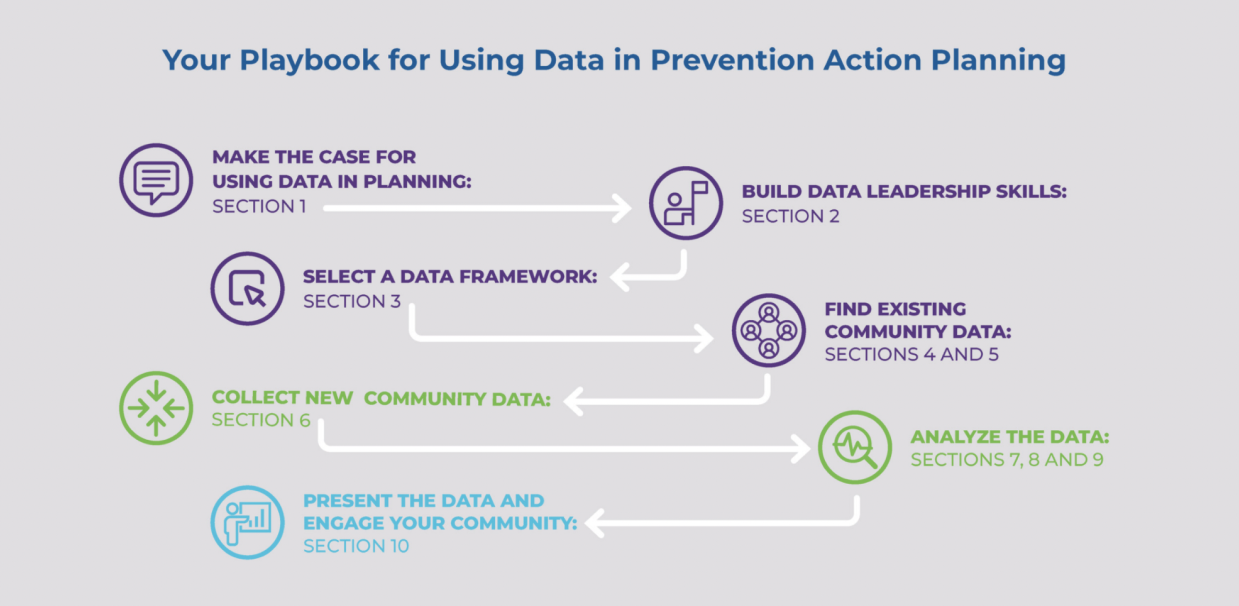Data Playbook For Prevention
Action Planning
The Data Playbook was created to help guide county prevention planning teams through the essential steps for sourcing, selecting, gathering, analyzing, and sharing data and stories to engage communities and key stakeholders in this important process to strengthen families.
1. Who Should Use The Data Playbook
1. Who Should Use The Data Playbook
This Data Playbook for Prevention Action Planning was created by and for cross-system prevention planning teams , including those related to AB 153 , and Family First Prevention Services Act (FFPSA), who are developing comprehensive county plans to strengthen families and prevent child maltreatment. County prevention planning teams are generally co-chaired by leadership from child welfare and the county’s child abuse prevention council (CAPC), and should also include other involved and responsible system leaders, tribal representation where appropriate, as well as leadership from private service providers and community-based organizations.
“When we think about data, it really starts with leadership and training leaders. If I’m not asking the question, my team wouldn’t look for answers to that question.”
— Tracie Neal, Chief Probation Officer, Shasta County Probation Department

2. Why Use The Data Playbook
2. Why Use The Data Playbook
This guide provides all members of the prevention planning team with the tools they need to effectively use data to strengthen their child maltreatment prevention efforts. When used well, data has the power to enable greater clarity, improve communication, and support a more efficient use of resources, with the goal of a stronger and healthier community where our children can thrive.
“I think it’s about helping families before it gets to child welfare. We need leadership from our system (public) partners, private agencies and the community to support and strengthen our families.”
— David Swanson Hollinger Senior Program Manager, Ventura Children and Family Services and Co-Chair, Prevention and Early Intervention Committee of the California Child Welfare Council
“It is both important and respectful to understand the challenges parents face and by collecting community level data, county planning efforts will have a better chance at keeping families safe and together.”
— Roger De Leon, Parent Partner, Riverside County Children’s Services and member of Child Welfare Council
3. How To Use The Data Playbook
3. How To Use The Data Playbook
The Data Playbook leads users through a thorough prevention planning process:
→ Your first “play” in using the Data Playbook is deciding on a data framework to guide your selection of indicators of community strengths and needs. The Playbook includes definitions of some established frameworks, including pros and cons of each.
→ The Playbook then provides a list of the most commonly cited indicators that can be used to describe community conditions (e.g. economic stability, housing, access to mental health care, etc.), and notes specific data points used to measure these indicators for counties across California.
→ Next, the Playbook provides a curated list of secondary data sources, as well as methods for collecting primary data. For both, the guide walks through the details of common pitfalls that can sabotage both your collection process and the accuracy of the data collected.
→ Once you have the framework and data, the playbook offers tools for disaggregating the data into meaningful data sets to more effectively address the questions you are trying to answer.
→ And lastly, in order to communicate the data, the Data Playbook walks readers through some key principles for data visualization and storytelling.
“I’m not a big data person, but what I have come to recognize is that the ‘a-ha’ is the story it tells. When I think about data as a story, then I get excited about it. This is an important message to help folks get on board.”
— Carol Carillo, Executive Director, Child Abuse Prevention Council of Contra Costa County
